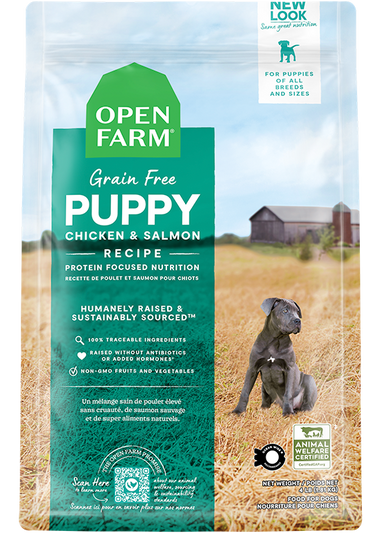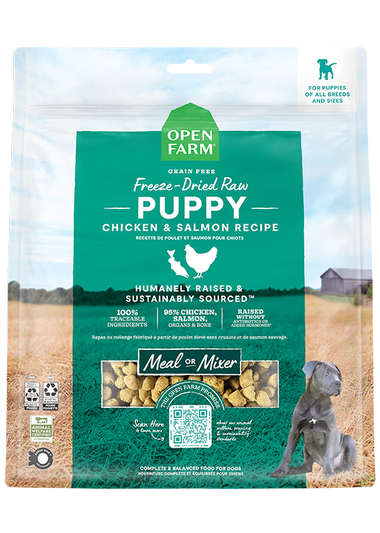If you’ve just adopted a puppy into your family, it is important to give your new addition the right kind of food it needs to grow into a happy, healthy dog. Depending on your puppy’s age, you may need to undergo the weaning process before transitioning to dry kibble; this usually occurs around four-weeks-old.
Learn more about how to feed a puppy, specifically what to expect during the weaning transition, and when they can start eating dry dog food.
When Can Puppies Eat Dry Food: Steps in the Weaning Process
Weaning refers to the process of slowly taking your puppy off their mother’s milk or liquid supplement and transitioning them to a dry food diet. Typically, weaning begins when a puppy is around three- to four-weeks-old and coincides with the arrival of its first teeth.
As the mother grows uncomfortable with the pup’s teeth, she may naturally begin to pull away, forcing the puppy to seek out alternative sources of food.
To wean your puppy off its milk diet, take the following steps:
- Start taking the puppy away from its mother a few times per day for an hour and try to feed it a gruel mixture. A gruel mixture is the intermediate food for pups as they transition from mom’s milk to dry kibble that is soft and easy to eat.
- Make a gruel for the puppy using puppy food mixed with a puppy milk supplement or water.
- Place the gruel in a shallow dish and offer it to the puppy. Dip your finger in the gruel to help the puppy explore the food.
- Return the puppy to its mother and allow her to eat the rest of the gruel.
- Continue the process, gradually increasing the amount of dry food you offer to the puppy.
How Much Food Should You Feed a Puppy?
Learning how much to feed a puppy can take some trial and error. Your puppy’s diet should contain around 10 percent solid food when you begin weaning. Your gruel mixture needs to start at a thin consistency, gradually becoming more solid. Your puppy will work its way up to eating solid puppy kibble by about seven to eight weeks.
For most puppies, you can adhere to the following mixture ratios for weaning:
Week one: 3:1 ratios of liquid to dry dog food Week two: 2:2 ratio of liquid and dry dog food Week three: 1:3 ratio of liquid to dog food Week four: try feeding your puppy regular dry dog food
When Should Puppies Transition to Adult Food?
The American Kennel Club recommends that puppies between six and twelve weeks old remain on puppy food. Puppies, especially large breeds, need calcium and other nutrients to help them grow properly. Although adult dog foods provide excellent nutrition for grown dogs, puppy dog food is specially formulated to give puppies the high amounts of protein they need.
Around three to six months, you can begin to transition your puppy to adult dog food. For optimal health, choose premium dry dog food, like those offered by Open Farm. You can also mix in healthy wet dog food containing chicken, pumpkin, salmon, carrots, beef and several other fresh, nutritional ingredients for your pup so their meal is more enjoyable and has important nutrients!
Find High-Quality Food for Every Stage of Your Dog’s Life
No matter how old your dog is, Open Farm has healthy options for their diet. Our pet food is made from healthy, sustainable and responsibly sourced ingredients that help your dog stay healthy and strong. Find exceptional dog food for every stage of your pet’s life at Open Farm!








































 Sign In
Sign In
 Create Account
Create Account














